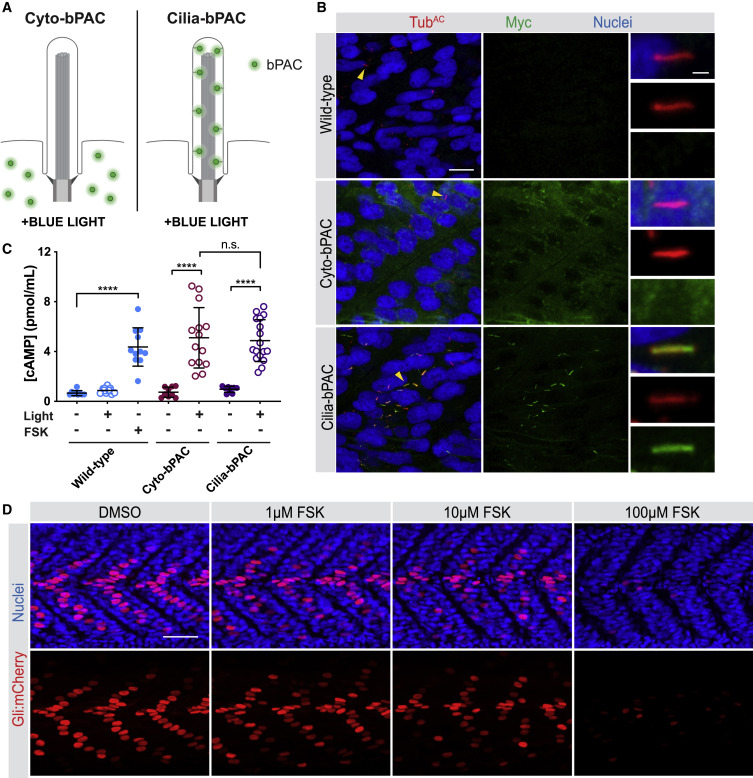Fig. 1 (A) Immunofluorescence imaging of somites 12–14 in 24 hpf Gli:mCherry transgenic embryonic somites without bPAC (control), expressing Cyto-bPAC or expressing Cilia-bPAC raised in the dark or stimulated with light. Scale bar, 40 μm. (B) Quantification of Gli:mCherry-expressing cells per somite. n = 8–10 embryos collected over two independent clutches. Cells in somites 12 through 15 were counted and an average value of cells per somite was determined for each embryo. The average values per embryo were used as individual data points in Figure 2 graphs and statistical analyses. (C) Schematic of how HH signaling affects somitic cell fate. Muscle pioneer cells (MPs, green) express high levels of En and are specified by high levels of HH signaling. Superficial slow fibers (SSFs) express Prox1 and are specified by lower levels of HH signaling. Modest attenuation of HH signaling attenuates MP formation, and more severe attenuation of HH signaling attenuates SFF formation. (D) Immunofluorescence imaging of En (green) and Prox1 (magenta) in wild-type and Cyto-bPAC- or Cilia-bPAC-expressing embryos with or without light stimulation. Scale bar, 40 μm. (E) Quantification of the average number of En-expressing cells per somite. (F) Quantification of the average number of Prox1-expressing cells per somite. n = 9–20 embryos for each condition. Each data point represents the average number of En or Prox1 expressing cells per somite 12 through 15 per 24 hpf embryo. Significance was determined via two-way ANOVA followed by Tukey’s multiple comparison test. A p value <0.05 was considered statistically significant and is denoted as follows: ∗∗∗∗p < 0.0001. Data are represented as means ± SD.
Reprinted from Cell, 184(11), Truong, M.E., Bilekova, S., Choksi, S.P., Li, W., Bugaj, L.J., Xu, K., Reiter, J.F., Vertebrate cells differentially interpret ciliary and extraciliary cAMP, 2911-2926.e18, Copyright (2021) with permission from Elsevier. Full text @ Cell

